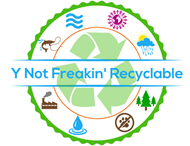[ad_1]
Rice University researchers have succeeded in creating graphene, not from costly purified starting materials, but from everyday trash. The amount produced is in kilograms per day, rather than the customary small batches of grams per day produced via traditional methods. With the researchers’ novel technique using electricity, even carbon sourced from food scraps, plastic waste and wood clippings can be the starting material for high-quality graphene. This breakthrough study holds both environmental and market promise for various scaled-up applications.
Research team lead James Tour said on The Engineer, “With the present commercial price of graphene being $67,000 to $200,000 per ton, the prospects for this process look superb.” Tour has co-founded the startup company Universal Matter, Inc. to commercialize this new waste-to-graphene technique.
Related: ‘Game changing’ graphene concrete is twice as strong and better for the planet
Graphene is highly prized in sectors like battery energy, (flexible) electronics, semiconductors, solar and even DNA sequencing for its outstanding mechanical, electric and thermal properties. Structurally, graphene can be visualized as ultra-thin sheets or films of pure carbon atoms, leveraged to create high-strength materials.
For decades, graphene had only been conceptualized by theoretical physicists. Then in 1962, it was observed via electron microscopes. However, its instability led to it remaining on the fringes of physics. That changed in 2002, when Andre Geim, a University of Manchester physics professor, re-discovered graphene.
The New Yorker documented Geim’s specialty as microscopically thin materials. Hence, it wasn’t much of a leap for him to rethink stacking carbon atoms into thin layers to see how they’d behave in particular experimental conditions. Geim was thereby the first to isolate and produce graphene so that it was no longer an elusive substance. In 2010, Geim was recognized for his pioneering work with graphene and awarded the Nobel Prize in Physics.
Although the knowledge of isolating and producing graphene has been known since the early 2000s, the costs have been prohibitive. Why? Methods of creating graphene required, as Chemical & Engineering News cited, “expensive substrates on which to grow graphene and/or reagents such as methane, acetylene and organic solids that must be purified before use.”
But with this breakthrough from the Rice University and Universal Matter, Inc. team, the industry is about to change. Just think, this new trash-to-treasure technique with graphene poses a win-win in terms of both cost for production and the environment.
Via Science
Image via CORE-Materials
 Pollution Climate Change Holocene Deforestation Population Acidification Y Not Freakin' Recyclable
Pollution Climate Change Holocene Deforestation Population Acidification Y Not Freakin' Recyclable



